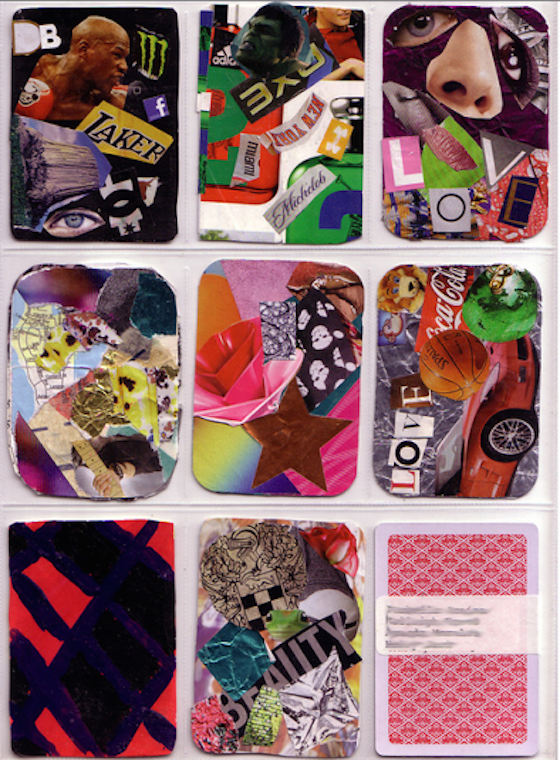There was a time in my teaching career when I didn’t know what ATCs were. Ignorantly, I assumed it was another one of the educational acronyms that surround us. It wasn’t until a good friend of mine clued me into her own creation and collection of Artist Trading Cards that I realized what a cool project they could be in the classroom.
Since that friend turned me onto them, I’ve done an ATC project pretty much every year. It’s a quick, fun, and successful project. The miniature scale and the fact that students create multiples makes this a great lesson to kick off a new semester or wrap up the year or even if you just have a little time between projects.
Over the course of many ATC projects with my students, I’ve discovered some helpful tips and some pitfalls to avoid to help all of your students find success.

1. Provide Structure
This project lends itself to varying degrees of choice in its simplicity. Students make tiny artworks that are the size of cards and then trade them with other artists. The size is up to you, but I like using cards that are 3.5″ x 2.5″, the size of sports trading cards. The trading can take place within a single class, with two separate classes at school, or even with students from other towns.
I’ve found that if I just say, “Make six cards,” many students will struggle conceptually with how to start. I like giving them some guidelines. I find these parameters actually help students out creatively as they need a little resistence to work with and against. I’ve gone completely abstract where each card must depict an element of art. I’ve gone more narrative where each card depicts a favorite memory, phobia, dream, or identity. I’ve even done where each card has to depict a different art style so we tap into a little art history.
2. Beware the Numbers Game
Whether you make 2, 4, or 20 cards, don’t get your students bogged down in a numbers game. I’m so guilty of this. We learn through repetition. My students’ 6th cards are always way more interesting and successful than their firsts. If you put too much structure on too elaborate a set of cards, you’ll end up bogging your kids down with minute details which they’ll then hone in on. They’ll obsess over “crossing cards off the list.” You’ll know your students are lost in the number game when you’re inundated with misguided questions like, “How many of them have to…” “Which ones had to have…” instead of questions about aesthetics and technique. Regardless of your specifics, don’t get bogged down in the numbers game.
3. Try a Variety of Materials
My go-to media for teaching ATCs is collage. Not only is it one of my passions, but I think this is a place in my curriculum where collage works best. Most importantly, because I teach a general “smorgasbord” middle school class, I like for my students to experiment with as many different mediums as possible. All that being said, I’ve also busted out the acrylic paint, watercolor pencils, graphite sticks, and printmaking ink. Have fun with a wide approach to media.

4. Use a 30% Rule
The coolest part of making ATCs is that they are, in fact, trading cards. My students, however, did have a hard time parting with some of their favorite cards. I understand their reluctance. It’s hard to trade away your artwork. It’s a very foreign concept for most artists, especially young ones. I created a rule of thirds that worked well for our class. We each made 6 cards. The students kept two immediately, two were displayed in the hallway, and two were sent on to cooperating schools from around the state. It’s always a blast to open up the package of the other schools’ work and claim the new pieces!
If you want to know even more about ATCs, be sure to check out the AOE ATC Lesson Plan for more specifics. In addition, sign up for the 2015 AOE Summer Conference where Nic Hahn will be sharing tons of useful info on the topic!
Have you done ATCs in your room? What tips do you have to share?
Have you personally participated in any ATC swaps? What kinds of work did you receive?
Magazine articles and podcasts are opinions of professional education contributors and do not necessarily represent the position of the Art of Education University (AOEU) or its academic offerings. Contributors use terms in the way they are most often talked about in the scope of their educational experiences.




